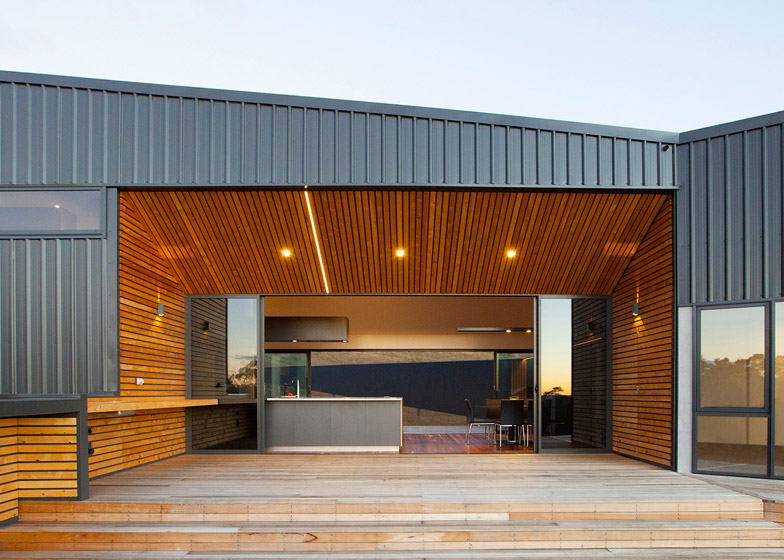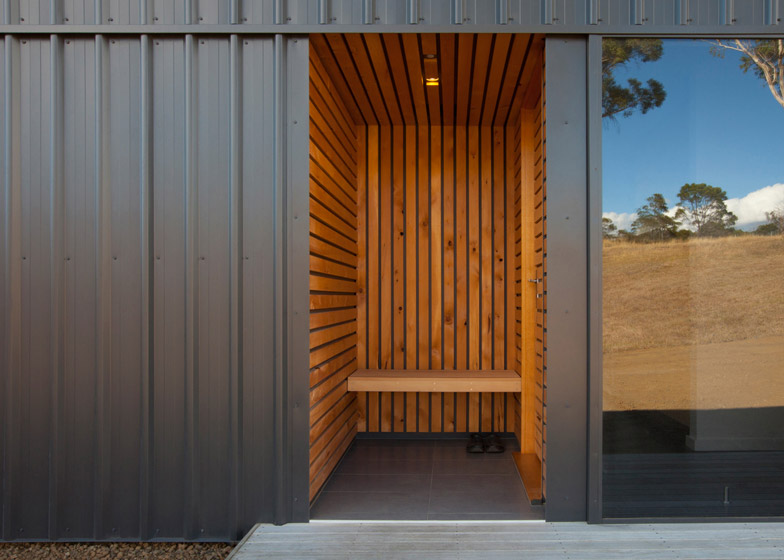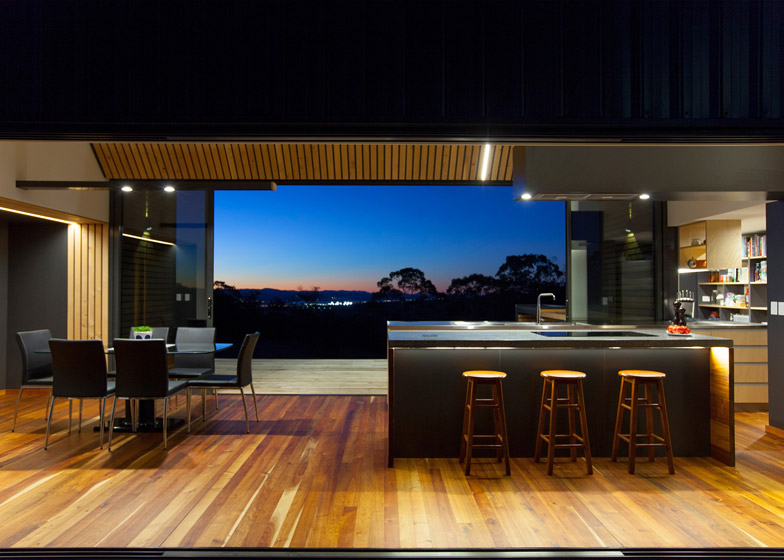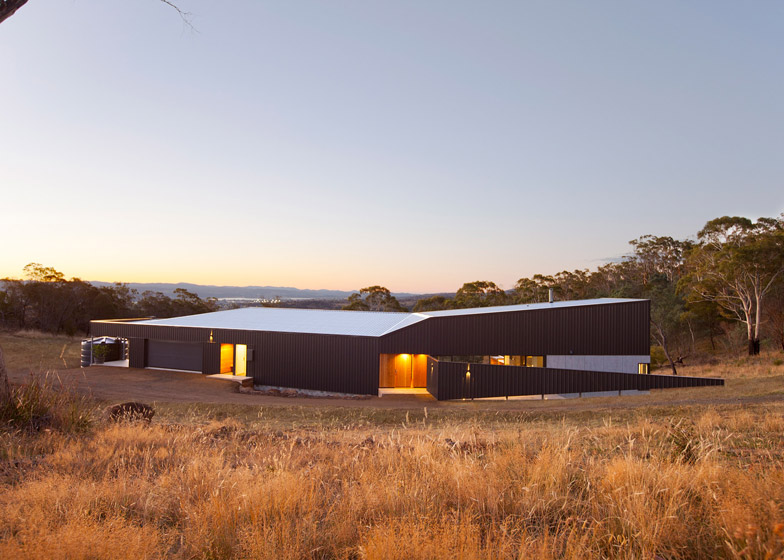The industrial aesthetic of this metal-clad house in Tasmania is interrupted by a timber-lined hole through its centre that creates sheltered terraces on either side of the kitchen (+ slideshow).
Valley House is situated on the edge of a valley overlooking the city of Launceston to the north of the Australian island.
Local architect Philip M Dingemanse planned the spaces and openings of the family home to make the most of available sight lines and natural ventilation.
The building's cranked plan follows the contours of the valley's slope and angles upwards at its northern end to optimise exposure to northern sunlight.
A large opening penetrates the building where the two angled wings join.
This space accommodates the kitchen and its adjoining terraces, and is flanked by glass walls that can be slid back to open up on both sides.
"The suggestion is that the valley remains continuous through the house with outdoor living areas on either side accommodating variable weather conditions," Dingemanse said.
"Parts of the building are pulled away forming protective wings and reveal the inhabitation of the home."
On the side of the building looking out across the landscape, the kitchen opens onto a covered deck that is partly recessed from the facade.
Timber cladding lining the interior of this space offers a warm contrast to the sheet steel and cement panels applied to the rest of the exterior, which are intended to evoke typical agricultural buildings.
"Profiled metal cladding, cement sheet and timber reinforce a subtle link to the country shed typology in the rural context, yet elevate the modest material selections in their appropriation to residential architecture," said the architect.
"The metal sheeting's striation unifies the built form."
In addition to the sheltered outdoor spaces created by subtracting from the solid form, sections of the facade extend to partly enclose more terraced areas.
"The dark facade has elements pulled away to make shielding wings, with the exposed parts visually light, a conceptual connection to permitting the sun to penetrate the building," Dingemanse added.
On the elevation facing the hillside and the access road, an angled wall folds out from the facade to protect another terrace.
An entrance at the corner of the house leads into the open-plan dining and kitchen area. At one end, this space steps down to a lounge that looks out over the valley through large windows.
Open shelves separate the kitchen from the lounge, which has an angular ceiling accentuated by a cladding of wooden boards.
Stairs ascend from the landing next to the lounge to a bedroom suite on the first floor.
Further bedrooms are accommodated in the wing that extends to the opposite side of the kitchen. A separate entrance provides access to a service area between the bedrooms and a garage that adjoins an additional covered deck at the extent of the house.
Each of the ground-floor bedrooms opens onto a narrow deck that joins the outdoor space outside the kitchen. Steps lead down from this terrace to the surrounding grassland.
Photography is by Luke Hesketh.
Project credits:
Architect: Philip M Dingemanse
Structural Consultant: AJL
Consulting Builder: Streefland Homes and Developments
Building Surveyor: Protek Renewable
Energy Consultant: Mode Electrical














